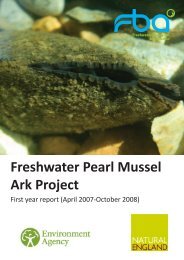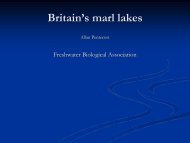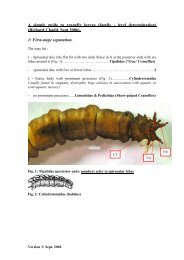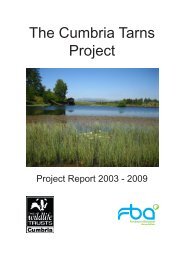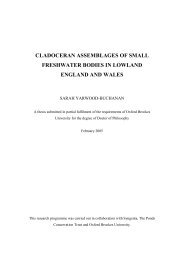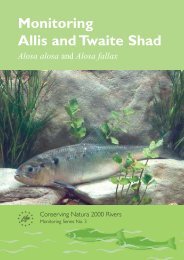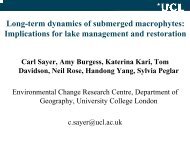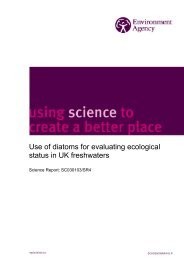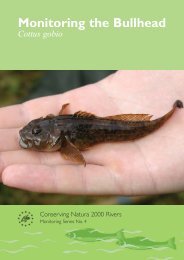Groundwater HIA post edit - FreshwaterLife
Groundwater HIA post edit - FreshwaterLife
Groundwater HIA post edit - FreshwaterLife
Create successful ePaper yourself
Turn your PDF publications into a flip-book with our unique Google optimized e-Paper software.
licensing (that may nevertheless be protected rights), and springs used for<br />
stock watering.<br />
• Records of domestic supplies, available from the Environmental Health<br />
Officer in the local authority. These records are far from complete however,<br />
and another approach is to examine records of public water supply pipes to<br />
locate properties that are not connected to the public water supply.<br />
• Records of boreholes and wells held by the British Geological Survey.<br />
• Ordnance Survey maps.<br />
• Databases of conservation sites (see Appendix 1).<br />
Ideally, certain key pieces of information should be collected on the boreholes and<br />
wells that are the licensed abstractions and protected rights, namely, total depth, depth<br />
to pump intake, current typical pumping water level, and which aquifer is exploited.<br />
This information is important for the assessment of potential derogation (see Step 11).<br />
Depending on how far away the furthest flow impact feature is, the potential search<br />
area is very large, and a great many potential drawdown impact features might be<br />
present within the search area. How thoroughly Step 8 should be undertaken is a<br />
matter of judgement. A door-to-door and field-by-field survey is the only sure way of<br />
identifying all the relevant water features. This is obviously too onerous at Tier 1, but<br />
may be necessary at Tier 3. The results of this step should be added to the sketch<br />
map, as shown in Figure 4.2 (the water features coloured red).<br />
4.2.9 Step 9: Predict maximum drawdown impacts<br />
The water features identified in Step 8 should now be examined in turn, to predict the<br />
magnitude and timing of the maximum drawdown impact. For predicting the magnitude<br />
of the steady-state drawdown, it is suggested that the Thiem or Thiem-Dupuit equation<br />
should be used as appropriate. These equations were introduced in Box 3.1, and a full<br />
explanation of their derivation and the assumptions on which they are based can be<br />
found in Kruseman and de Ridder (1990). For an abstraction in an unconfined aquifer,<br />
the simplified situation is as shown in Figure 4.3.<br />
Figure 4.3 Parameters for the Thiem-Dupuit equation<br />
32 Science Report – Hydrogeological impact appraisal for groundwater abstractions




